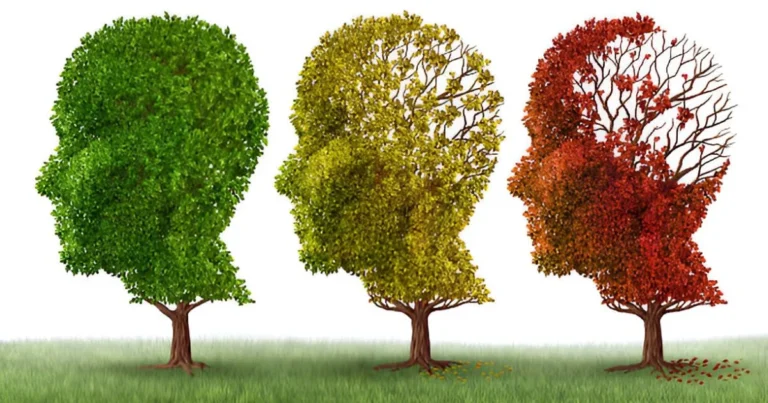Subjective age: When the mirror and the mind disagree
Isn’t it strange how we are relentlessly confronted with our date of birth? That unchanging number, returning each year with stubborn regularity, seems ironically indifferent to the transformations time has etched into our being. It rings like a reminder: we are moving, unavoidably, toward a horizon where frailty will have the final say. We begin vulnerable, grow to feel invincible, turning our twenty-something bodies into suits of armor, only to find, gradually, that armor cracking. One day, the mirror hands us a foreign image, an intruder haunting our flesh, and we turn away, deaf to time’s verdict, because the face staring back no longer matches the self we feel inside, a self still pulsing with the phantom of youth. What lies beneath this gap between our actual years and our felt age? And why does the mind, like a stubborn alchemist, keep transforming the lead of time into illusory gold?
What is subjective age?
In gerontology, where researchers seek psychological markers of aging, subjective age refers to the age one feels internally, often distinct from chronological age. First conceptualized in the 1950s (Tuckman, Lorge, Blau), it reflects a dissonance between the calendar’s metrics and lived time. A 60-year-old, for instance, might feel “50,” adopting behaviors, tastes, or aspirations associated with a younger decade.
This gap often begins to emerge in midlife (40–50 years), when the early signs of aging, graying hair, slower physical rhythms, clash with a lingering sense of youthful vitality. As people age, the divergence widens: after 70, the subjective age may trail behind the actual age by 10 to 15 years. However, it can begin as early as adolescence, when young people may feel “more mature” than their actual age, shaped by life events like a first job or becoming a parent.
Subjective age is both a psychological and cultural marker, highlighting our ability to negotiate with time, caught between biological reality and a longing for timelessness.
Developmental psychologist Erik Erikson and researcher Shevaun Neupert offer complementary views on this phenomenon. Erikson viewed subjective age as the outcome of psychosocial crises encountered at each stage of life. Adolescents forging their identities, adults grappling with intimacy or isolation, and seniors searching for integrity all construct a self-perception that may align, or clash, with their chronological age. These resolutions tend to be enduring, shaping long-term identity.
Neupert added a dynamic dimension: subjective age, she found, fluctuates daily depending on stress, vitality, and life context. A person who has overcome the challenge of generativity (in Erikson’s terms) might feel “older” during an exhausting day and “younger” after an uplifting experience. If Erikson sketched the roadmap of perceived age across life stages, Neupert mapped its daily tides.
Together, their research reveals subjective age as both a psychosocial legacy and a tool of moment-to-moment adaptation. Erikson’s crises offer a framework for life’s developmental terrain, while Neupert’s findings show how we navigate that terrain, weathering the storms of stress and savoring moments of renewal. In this duality, aging is neither a biological inevitability nor a mental illusion, it is a constant dialogue between our personal histories and the impermanence of the present.
Fighting time: Mortality, illusions, and the inner fountain of youth
The Terror Management Theory (Greenberg, Pyszczynski, Solomon), Shelley Taylor’s work on positive self-illusions, and the existential philosophy of Martin Heidegger together illuminate how subjective age becomes a psychological buffer against the fear of death. According to Terror Management Theory, the awareness of mortality, our “being-toward-death,” in Heidegger’s terms, elicits existential terror, which we mitigate by clinging to cultural ideals, such as youthfulness. In societies where youth is the ultimate value, aging becomes a reminder of mortality. Feeling younger, erasing wrinkles, or adopting “rebellious” styles at 60 becomes a symbolic defense against the march of time.
Shelley Taylor complements this view with her theory of positive illusions: feeling younger than one’s age is not merely denial but a vital resilience strategy. By fostering optimism and encouraging engagement in stimulating activities, this moderate illusion enhances both mental and physical health. One study found that seniors with a subjective age ten years younger than their actual age had an 18% reduced risk of developing dementia (Taylor et al., 2009).
Still, Heidegger warned that fleeing from death, whether through denial or illusion, only deepens existential anxiety over time. The convergence of these perspectives presents a fragile equilibrium: subjective age is at once a cultural shield (TMT), a psychological elixir (Taylor), and an existential mirror (Heidegger).
Though distinct, these approaches all underscore that aging is an act of constant negotiation. If denial is tempered by Heideggerian clarity, accepting our “being-toward-death”, then the illusion becomes not an escape, but a way of dancing with time, where the illusion itself becomes an art of living.
Cognitive youth and the illusion of time
Neuroscience sheds further light on the paradox of subjective age, revealing the brain as both accomplice and betrayer in our perception of time. David Eagleman’s work on time perception shows that as we age, the brain encodes fewer novel experiences, reducing the density of memorable moments. This subjective compression makes the years feel like they’re passing faster, like flipping through a book without recalling its chapters. A 70-year-old might feel that “the last ten years flew by,” distorting their awareness of aging. This isn’t a cognitive flaw but an adaptation: by smoothing monotony, the brain preserves a sense of continuity, even if the mirror tells a different story.
However, neuroplasticity, described by researchers like Norman Doidge, offers a hopeful counterpoint. The brain’s capacity to rewire itself through learning, creativity, or new environments maintains cognitive youth. An 80-year-old immersed in challenging puzzles or cultural travel can retain mental agility comparable to someone decades younger. This plasticity directly supports subjective age: feeling “young at heart” helps transcend the limits of an aging body, as if the mind refuses to age alongside the cells.
These neurobiological insights complement psychosocial theories. Eagleman’s time compression explains why Erikson saw achieving integrity (acceptance of one’s past) as so challenging: the brain erases detail, blurring the life narrative. Conversely, Doidge’s plasticity echoes Neupert’s daily adaptability: by stimulating the brain, we rejuvenate our perceived age, creating a virtuous cycle where to learn is to stay young.
In practice, cultivating curiosity and novelty becomes a powerful anti-aging strategy, not to deny time, but to enrich our perception of it, transforming each year into a mosaic of moments rather than a relentless countdown.
The ageless body in our mind
Subjective age, this inner sense of being younger than one’s chronological age, also finds roots in motor memory and the conflict between the lived body and the biological body. The brain, imprinted with memories of youthful movement (running, dancing, athletic gestures), retains a phantom imprint of these capacities long after the body can no longer perform them. This mismatch creates psychological dissonance: a 70-year-old whose brain “believes” it can still leap like it once did may feel young mentally, even as their body becomes unfamiliar.
Subjective age appears deeply anchored in specific brain mechanisms. The cerebellum and basal ganglia, involved in procedural memory and motor automatisms, are relatively resistant to aging. This preservation of bodily memories fuels the illusion of persistent youth, even as physical decline sets in. At the same time, a refusal to acknowledge vulnerability, such as avoiding the use of a cane, reflects a psychological strategy to maintain a youthful self-image, consistent with Taylor’s theory of positive illusions.
However, denying physical limitations, while reinforcing subjective youth, can have real consequences: falls, fatigue, or gradual exhaustion. Still, the mere ability to imagine oneself performing complex movements fosters a rejuvenating effect, preserving a sense of vitality. These intact motor memories nourish the illusion of agility, reinforcing a subjective age younger than reality.
But this momentum can collide with existential frustration when the imagined physical self, echo of youthful prowess, clashes with the reality of a weakened body. Heidegger described such moments as a brutal confrontation with finitude: the body, once an ally, becomes a tangible reminder of time slipping away. This duality, between remembered agility and the acceptance of new limits, turns subjective age into a paradox: a vibrant internal youth haunted by the shadow of decline.
Ultimately, subjective age is more than psychosocial identity (Erikson) or daily stress (Neupert); it is also the legacy of a phantom body that refuses to age. Embracing this duality, honoring the memory of vitality while accepting present limitations, is the subtle art of aging without self-betrayal.
Youth for sale: How capitalism sells us back our younger selves
Youth-worship, amplified by modern capitalism (Byung-Chul Han, The Burnout Society), has turned subjective age into a commodified, gendered fantasy, where youth symbolizes productivity and market value. The fashion and beauty industries exploit this pursuit by targeting men and women differently: for women, anti-aging creams and “youthful” clothing promise to erase the marks of time; for men, vitality supplements and tech gadgets equate youth with performance.
Social media exacerbates these gendered ideals, broadcasting unrealistic beauty and strength standards. Algorithms feed women images of eternal youth: slim bodies, flawless skin, perfect hair, all enhanced by filters and editing. These visuals, pervasive on Instagram and TikTok, reinforce the belief that an aging body is a failing body, intensifying the gap between real and subjective age. Men, meanwhile, are flooded with portrayals of eternal virility: muscular physiques, boundless energy, ageless elegance, propped up by fitness influencers and ads for male “anti-aging” supplements.
This digital pressure creates a dual illusion:
- For women: The pursuit of youthful appearance becomes constant labor, validated by likes and shares. Filters distort self-image, one study found that 60% of frequent filter users feel dissatisfied with their real appearance (Dove, 2023).
- For men: Physical performance becomes a core marker of social worth. Platforms glorify athletic bodies, equating muscles with professional and sexual success, fostering a denial of age-related limitations.
Capitalism exploits this gendered fracture: by selling ephemeral solutions (“Instagram-fit” clothing, retouching apps), it turns subjective age into an endless project where aging equals failure. Women, in particular, internalize this pressure, 70% of anti-aging cosmetic spending is female (Euromonitor, 2022), while men invest in testosterone therapy and costly fitness programs.
However, counter-narratives are emerging: movements like #AgingGracefully and #BodyPositivity seek to challenge these norms. Still, algorithms prioritize “perfect” content, marginalizing dissenting voices. In the end, social media crystallizes a gendered tyranny of subjective age, where aging becomes a battle against distorted digital mirrors, reflections of a fantasy youth always just out of reach.
Mirrors in the crowd: How others shape the age we feel
Shelley Taylor’s work on positive illusions, combined with the social convoy model (Kahn, Antonucci), shows that subjective age is shaped by how others see us. Social interactions act as distorting mirrors: a compliment (“You don’t look it!”) can momentarily rejuvenate perceived age, while stereotypes (“At your age…”) can weigh it down. Erikson emphasized that identity is formed through dialogue with others, thus, someone surrounded by younger coworkers may feel more vigorous, while social isolation accelerates perceived aging.
Shevaun Neupert demonstrated that relational stress (family conflict, workplace tension) makes people feel older day by day, whereas joyful interactions (intergenerational rituals, creative sharing) restore youthfulness. These fluctuations reflect a social dialectic of lived time: nourishing connections rekindle cognitive patterns associated with youth, curiosity, lightness, while conflict locks us into worn-out temporalities. Heidegger might interpret these oscillations as evidence that our experience of time is always co-constructed: aging is a negotiation of self amid the chorus of voices around us, between energizing echoes and corrosive silences.
Byung-Chul Han, in our hyperconnected age, would add that fragmented digital interactions intensify this instability: fleeting likes may boost the ego, but digital solitude deepens a ghost-like, disembodied sense of aging. The social mirror doesn’t lie, it reveals that our inner youth is a collective melody.
The ageless self: Living between who we were and who we are
“Carpe diem,” whispers Horace, urging us to seize the day without fearing what lies ahead. Still, within every human being, rational and fragile alike, echoes Terry Pratchett’s reflection: “Inside every old person is a young person wondering what happened.” Aging means navigating between these two poles: embracing the moment while carrying the weight of a past where the younger self marvels at the transformations time has wrought.
Erikson’s identity crises, Neupert’s daily fluctuations, and the gendered illusions of capitalism (Byung-Chul Han) all point to this: subjective age is a necessary mirage. It lets us dance with memory, defy decline through imagined vitality, and confront the inevitable with grace. Social media, temples of youth-worship, amplify this tension, turning our reflections into riddles. Are we this aging body, or this defiant, eternal spirit within?
Heidegger believed that in the awareness of our finitude lies the potential for authentic living. Accepting that our springs are fading is not defeat, it is liberation. It invites us to cherish our wrinkles as verses in a singular story and to honor our fatigue as evidence of a life fully lived.
To “seize the day” does not mean denying tomorrow, it means embracing the duality: being both the wide-eyed youth and the wise elder, the strength and the vulnerability, the flower and its shadow. In the end, aging is not about fighting time, it is about recognizing time as a companion, one who, while stealing years, offers in return the richness of the present.
References
Kahn, R.L. & Antonucci, T.C. (1980) Convoys over the Life Course: Attachment, Roles, and Social Support. Life-span development and behavior, 3, 253-286.
Byung-Chul, H. (2014). La société de la fatigue. Paris, Circé
Doidge, Norman (2007) Les Étonnants Pouvoirs de transformation du cerveau. Pocket.
Erikson, Erik H (1968) Identity: Youth and Crisis. W. W. Norton & Company
Greenberg, J., Pyszczynski, T., Solomon, S. (1986). The Causes and Consequences of a Need for Self-Esteem: A Terror Management Theory. In: Baumeister, R.F. (eds) Public Self and Private Self. Springer Series in Social Psychology. Springer, New York, NY.
Krüger, G. (2011). Être et Temps À propos de l’ouvrage éponyme de Martin Heidegger. Archives de philosophie, Tome 74(1), 7-22.
Taylor, Shelley (1989) Positive Illusions. Basic books

Ahmed El Bounjaimi
Copywriter-Content Designer
Master’s in Organizational Communication, Hassan II University
Bachelor’s in Philosophy of Communication and Public Spheres, Hassan II University







